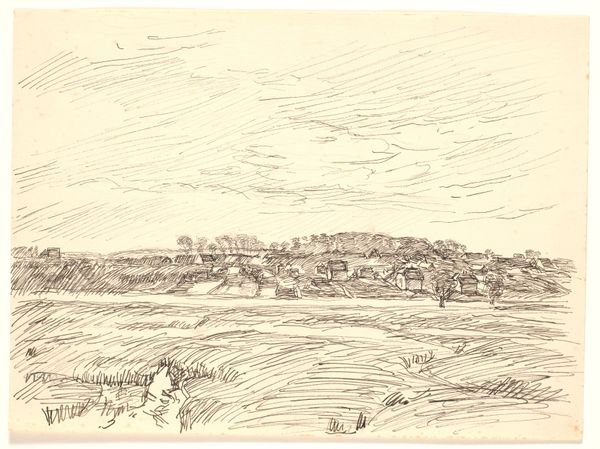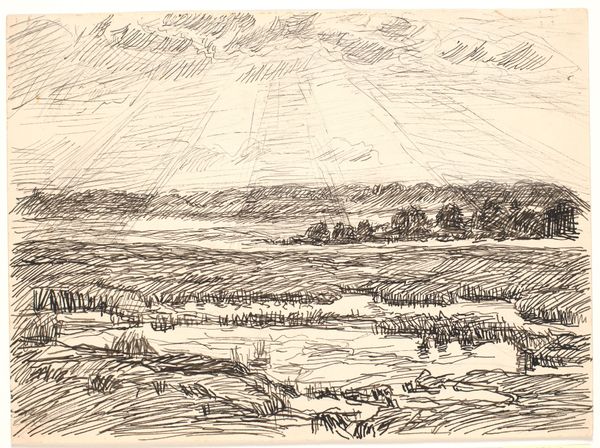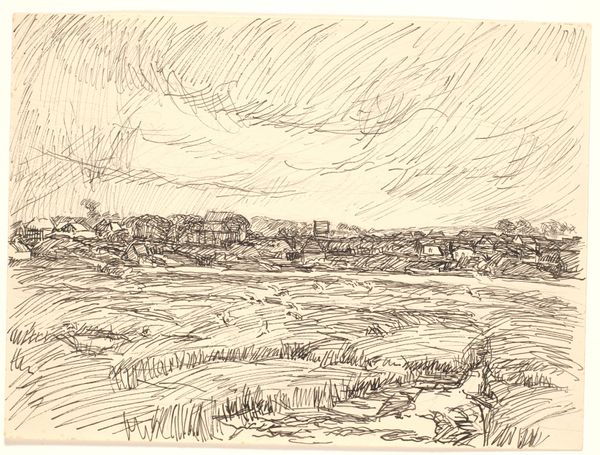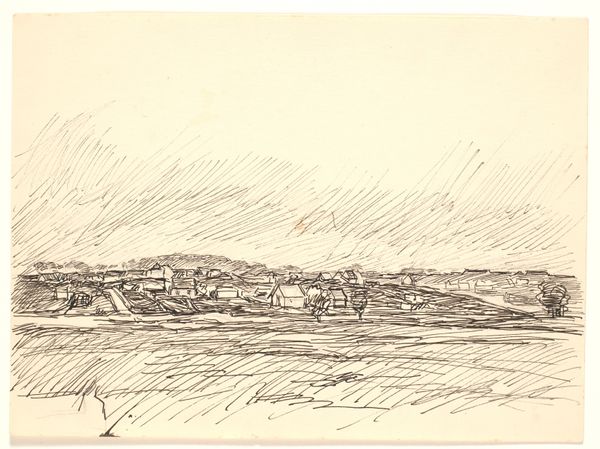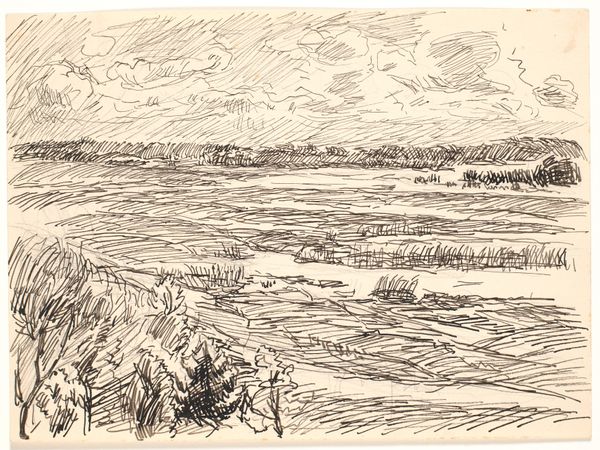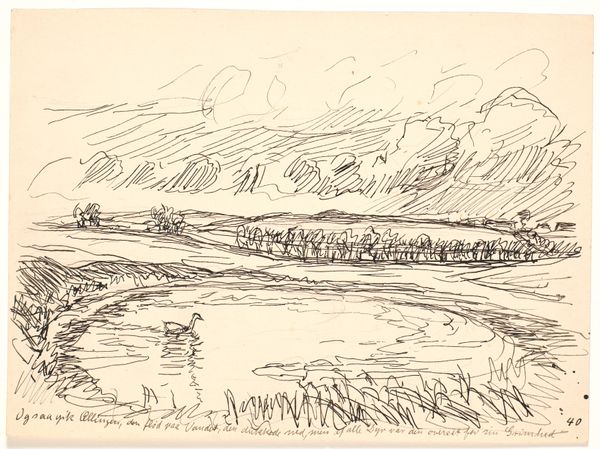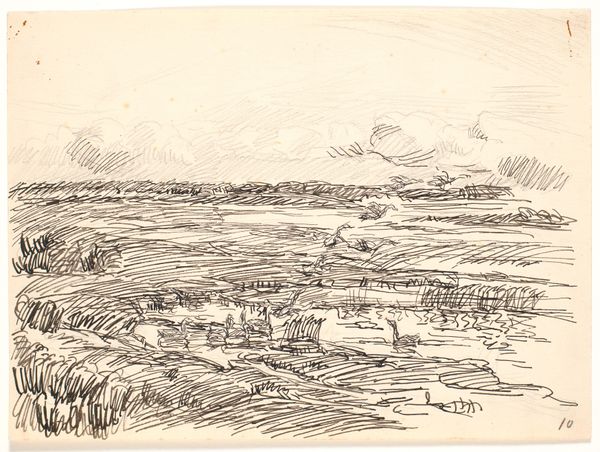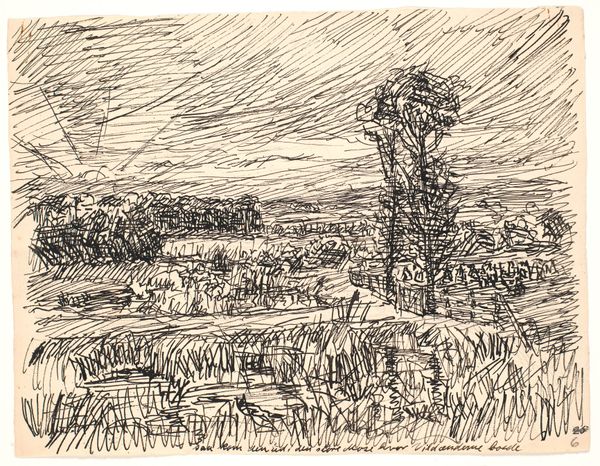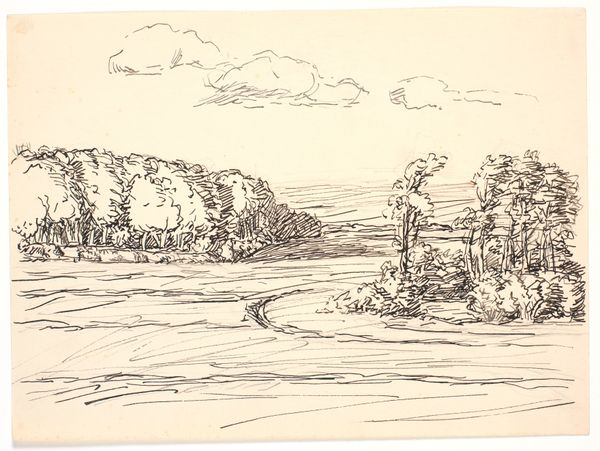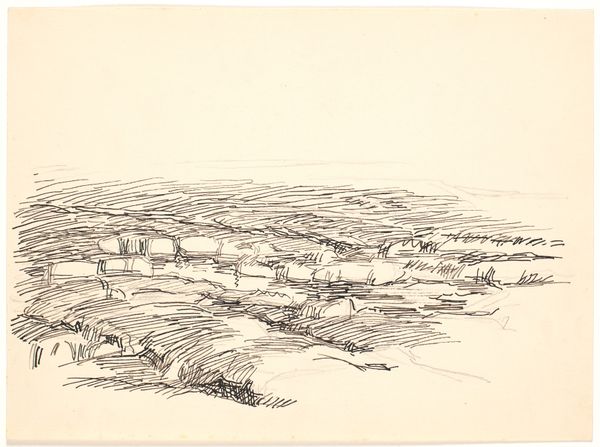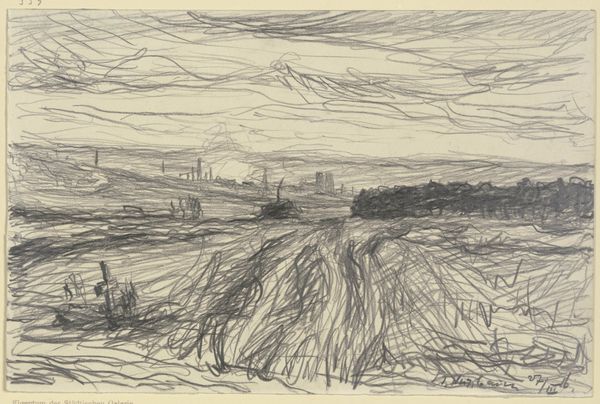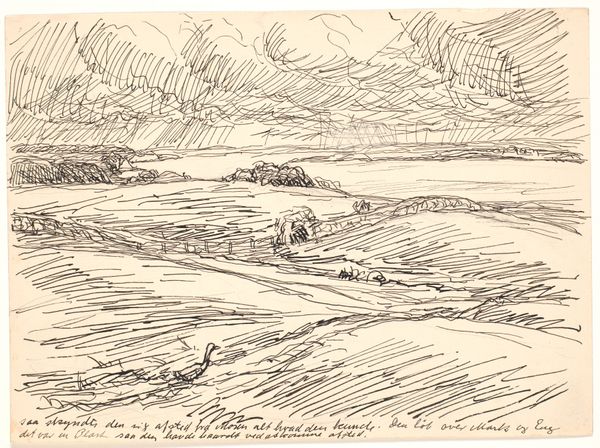
drawing, ink, pen
#
landscape illustration sketch
#
drawing
#
mechanical pen drawing
#
pen illustration
#
pen sketch
#
landscape
#
ink line art
#
linework heavy
#
ink
#
ink drawing experimentation
#
pen-ink sketch
#
thin linework
#
line
#
pen work
#
pen
Dimensions: 248 mm (height) x 338 mm (width) (bladmaal)
Curator: "Landskab med marker," or "Landscape with Fields," done in 1928 by Fritz Syberg, gives us a glimpse into the Danish countryside using primarily pen and ink. What’s your first impression? Editor: I'm immediately struck by its unsettled quality. It's not your typical pastoral scene; there's a sense of almost frenetic energy in the lines, particularly in the sky. Curator: Absolutely! It’s like the pen itself is mimicking the wind. You feel like you’re right there, about to be swept away by it. The use of line is fascinating, isn't it? Look at how Syberg uses hatching to create depth in the fields, yet everything retains this light, airy quality. It’s a dance between precision and looseness. Editor: That interplay speaks volumes. Consider the period – 1928, just before the Depression. This frantic linework might reflect the underlying anxiety and uncertainty of the era, especially regarding land and livelihood. Were these fields fruitful? Were the farmers prospering, or struggling against forces beyond their control? Curator: That’s a compelling reading. I think about Syberg’s own life; his struggles with mental health, the intensity he poured into his work. Maybe it's not just the land itself but a projection of inner turmoil. The landscape becoming a mirror for the artist’s emotional state. Editor: Yes! And landscapes have historically served as powerful markers of identity and ownership. Whose land is this? Who benefits from its yield? Syberg might be subtly questioning these power dynamics through the seemingly simple act of sketching a field. The absence of people further emphasizes the raw, almost violated, feeling of the earth. Curator: Violated, in what sense? Editor: Exploited, perhaps. Think about agricultural practices, land ownership concentrated in the hands of a few. Even without explicit figures, the drawing subtly evokes themes of labor and social inequality tied to the land. Curator: It's funny how a seemingly straightforward sketch can open up into such layered interpretations. It's a testament to art's ability to hold so many meanings simultaneously. Editor: Indeed. Syberg gives us a glimpse of a place and moment, but the ink bleeds beyond the literal. We're left pondering not just what we see, but what it suggests about the human relationship to the earth.
Comments
No comments
Be the first to comment and join the conversation on the ultimate creative platform.
